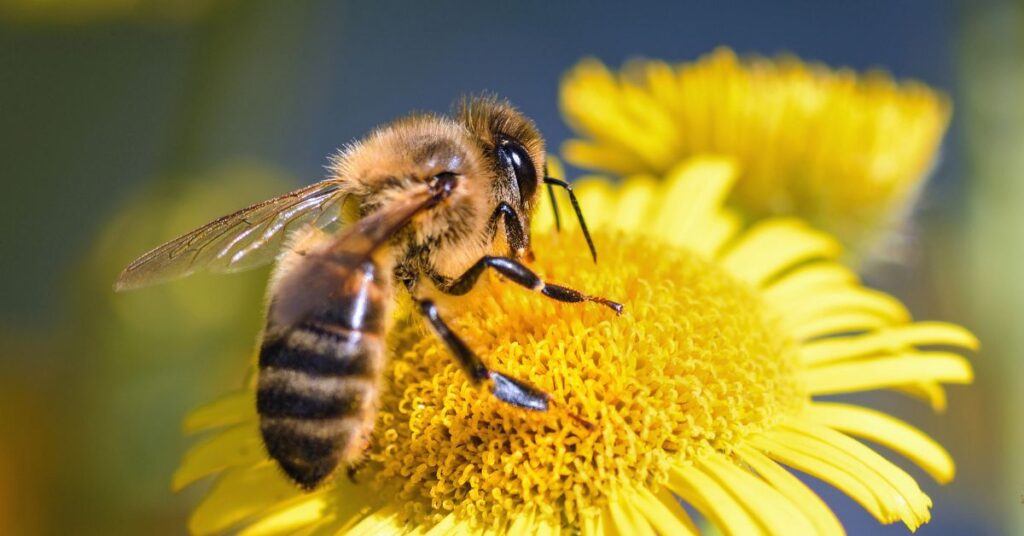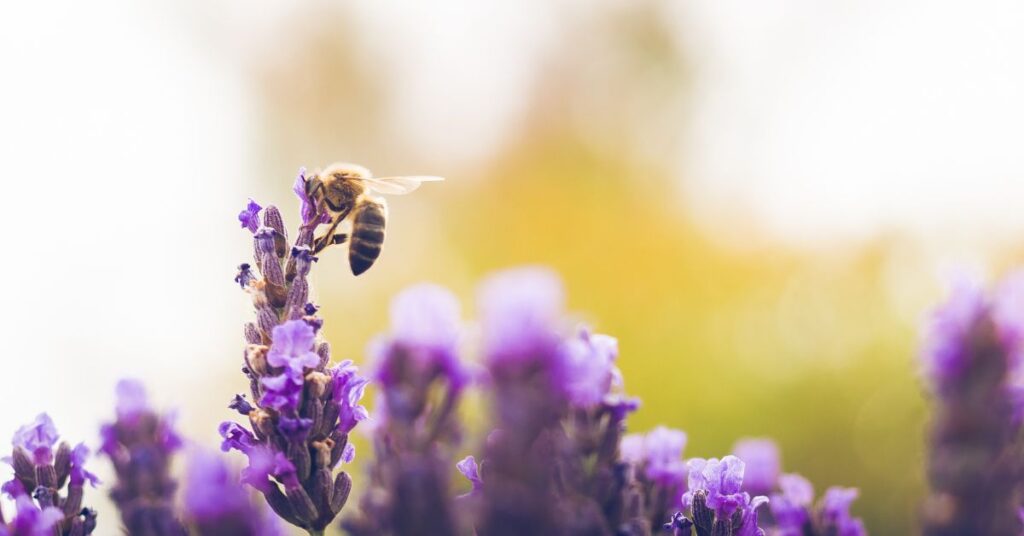Ah, the great outdoors. There’s nothing quite like the feeling of the sun on your face, the cool breeze in your hair, and the sound of buzzing in your ears. But wait – that buzzing isn’t the sound of the birds, it’s the sound of bees! Avoiding bees while hiking can be tricky, but don’t worry; you can conquer the trails without a sting to your name. Let’s discuss bee behavior and some tips on what to do if you encounter a swarm of bees on the trail.
Knowing Bee Behavior
To avoid bees when hiking, it’s important to understand their behavior. They tend to react to certain stimuli like movement and noise.
Bees are highly attuned to the environment, so if you’re in an area with a lot of flowers and plants, they may be attracted to the scents. Bees also tend to be more active during the day, so it’s best to go hiking in the morning or evening when they are less active.
When hiking, move slowly and keep your movements to a minimum to reduce the chances of provoking the bees. Additionally, try to keep noise to a minimum, as loud noises can easily disturb bees.
Being aware of the environment and the behaviors of bees can help you have a safe and enjoyable hiking experience.
LEGAL DISCLAIMER: This post may contain affiliate links. If you click an affiliate link and make a purchase, I may earn a commission. Also, as an Amazon Associate, I earn from qualifying purchases.
Wearing Proper Clothing
Bright colors such as whites and yellows attract bees. Studies have found that bees are three times more likely to land on yellow clothing than any other color. Therefore, it’s best to opt for darker colors like browns, blues, and greens. Dressing in neutral tones can help make you less visible to bees.
In addition to color, consider the type of clothing you wear. To reduce the risk of a bee sting, it’s recommended to wear long-sleeved shirts and pants that cover your skin. This provides an extra layer of protection.
Wearing a wide-brimmed hat can also be beneficial, as it helps protect your head and face from bee stings.
If you’re concerned about overheating, look for lightweight, breathable clothing that keeps you cool while still providing coverage.
It is also crucial to be aware of your surroundings. If you see a bee flying near you, remain calm and move slowly without making sudden movements. Swatting at the bee should be avoided, as this can trigger a sting response. Instead, try to move away from the area as quickly and safely as possible.
Avoiding Certain Types of Plants
Be mindful of what plants you pass by on your hike – some of them could be dangerous, even with just one touch of their petals! Bees are attracted to certain types of plants, so it is important to avoid these if you want to avoid them.
Related: How to Avoid Snakes When Hiking
Look for signs of bee activity like buzzing. This is an indication that it is best to avoid the area. Additionally, some plants have a strong scent, which may attract bees.
If you must pass by a plant that may attract bees, do so quickly and try to stay as far away as possible. Some plants that attract bees include:
- Lavender
- Zinnia
- Flowering Thyme
- Goldenrod
- Lantana
- Bee balm
- Black-eyed Susan
- Borage
- Lupine
- Liatris
- California poppies
Keeping a Safe Distance
If you’re near bees, it’s important to keep your distance. Research shows that the average bee can fly up to 15 miles per hour(21km/hr), which is faster than the average human can run!

If you’re in an area with many bees, it’s best to move away from the area quickly and safely. Remember that bees are important to our environment, so respect their space and take the necessary precautions to ensure your safety.
Checking the Weather Forecast
Knowing the temperature and humidity can help you avoid bees, as they are more active on warm and humid days. Additionally, it’s helpful to know if there will be any wind.
Strong winds can disrupt the bees’ flight patterns and make them more likely to be agitated. If you know there will be a strong wind, plan to take a different trail or avoid areas known to be populated by bees.
If there’s a thunderstorm or any other form of severe weather, it’s best to stay indoors and wait for the storm to pass. These conditions can create the perfect environment for bees to become agitated and swarm, so it’s best to stay away.
Using Natural Repellents
Several natural repellents can be used to ward off bees. Some of these include citronella, lavender, peppermint, and eucalyptus. These can be used in various ways, such as candle sprays, essential oils, or homemade spray.
Essential oils can be used to create a natural barrier around you and your hiking group, making it harder for bees to get close.
You can spray the essential oils around the perimeter of the area you are hiking in and around your person and your hiking companions. Peppermint oil is especially effective at repelling bees and can be used in numerous ways.
For a homemade repellent, combine equal parts of water and vinegar in a spray bottle, and add a few drops of each essential oil mentioned above. This homemade repellent is easy to make and can help keep bees away. You can also use candles or sprays containing these essential oils.
Finally, don’t wear sweet-smelling perfumes or lotions, as these can attract bees.
Taking Precautions When Eating
When eating outdoors, take precautions to ensure that bees don’t come near your food. Here are some easy ways to avoid attracting bees while eating:
– Keep food covered or contained until ready to eat
– Avoid sugary drinks and snacks
Doing this makes you much less likely to have an uninvited guest while you eat.
Related: How to Avoid a Wolf Attack
Keeping a Bee Sting Kit on Hand
Now that you’ve taken precautions to avoid eating food that may attract bees, the next step is to ensure that you’re prepared to handle a bee sting should one occur. While it’s impossible to completely eliminate the risk of being stung by a bee, there are steps you can take to minimize it.

One of the most important precautions you can take is to keep a bee sting kit with you at all times while you’re hiking. Click on the below image to check out this Finever Bee Sting Kit.
Keep a close eye on yourself and your surroundings while you’re out hiking. If you spot a bee nest, keep your distance and find another route.
If you’re stung, remain calm and apply the contents of your bee sting kit as soon as possible. Monitor your body for any signs of an allergic reaction, such as difficulty breathing, swelling, nausea, or dizziness.
With these simple strategies and a better understanding of bees’ behavior, you can confidently hike in harmony with these essential pollinators. Remember to stay calm and move slowly if you encounter a bee and choose hiking locations wisely.
Frequently Asked Questions (FAQs)
Why do bees sting if it kills them?
Bees sting when they feel threatened or perceive a potential danger to their hive. Stinging is a defense mechanism to protect their colony. The barbed stinger gets lodged in the victim’s skin, causing the bee’s abdomen to tear when it attempts to fly away, leading to its death.
Do bees die after stinging?
Honey bees typically die after stinging because their stinger is barbed and remains lodged in the victim’s skin. When the bee tries to fly away, the stinger is torn from its abdomen, resulting in the bee’s death.
What type of people are bees attracted to?
Bees are generally attracted to individuals wearing strong scents, such as perfumes, scented lotions, and hair products. Bright-colored clothing can also draw their attention. However, bees are primarily attracted to flowering plants and not necessarily to specific types of people.
